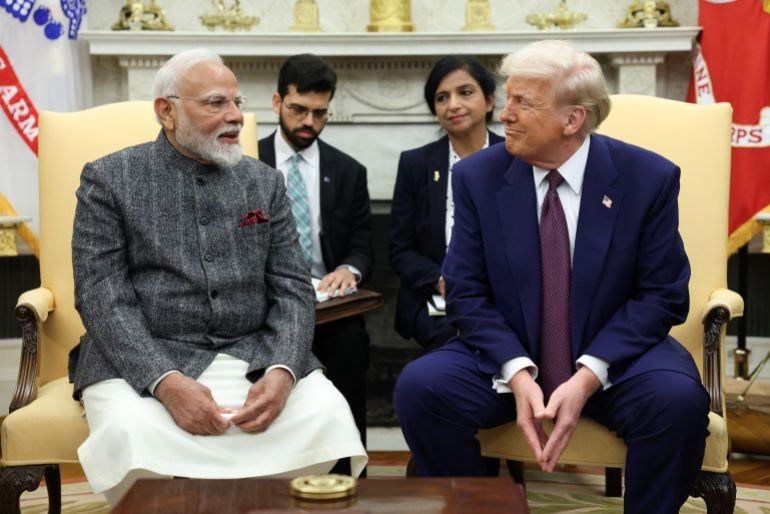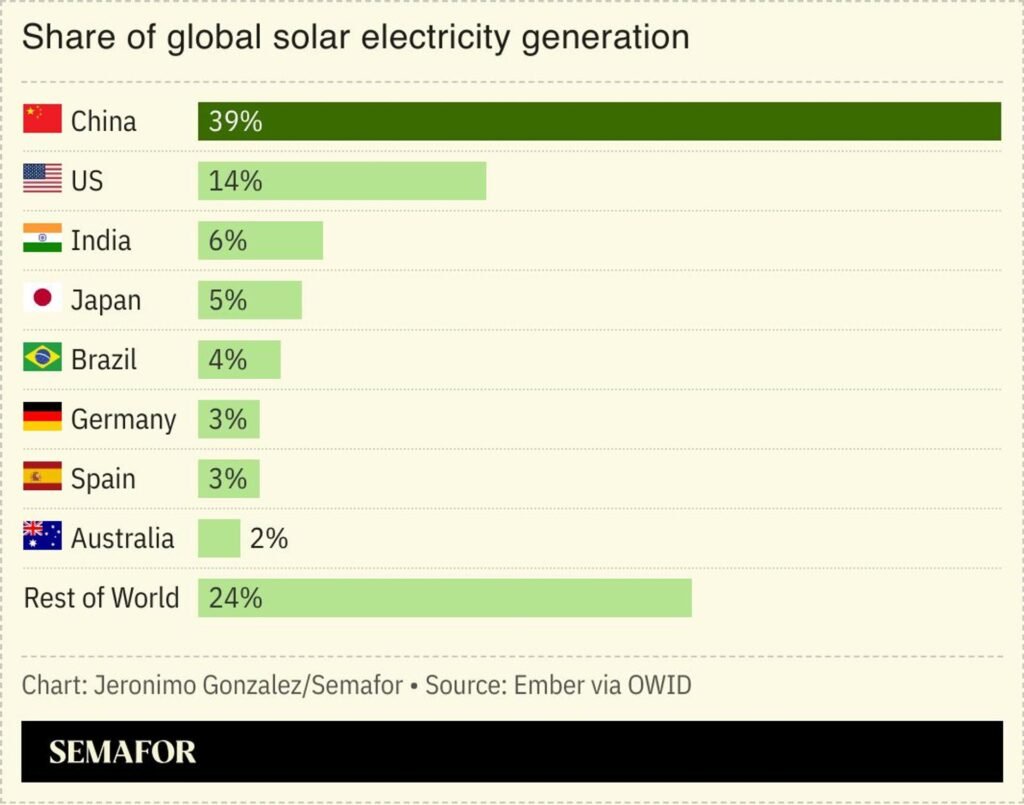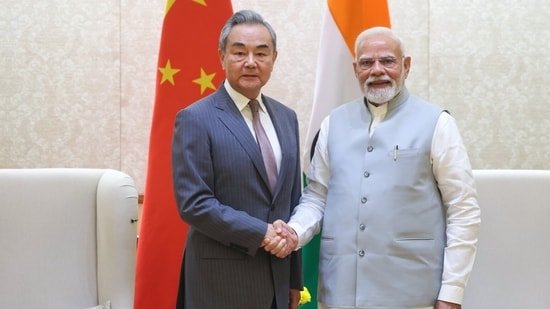The crowd holds its breath: a small metallic man crouches, gathers momentum, and tries to execute a somersault. He spins in the air… and crashes onto his back. The stands erupt in laughter. Meanwhile, in the ring, two more skillful humanoids trade kicks and punches; one loses rhythm, stumbles, and his rival takes advantage of the misstep to bring him down. A few meters away, five robots warm up by shaking their heads side to side before jumping onto the soccer field.
Beijing hosted the first World Humanoid Robot Games over the past weekend, an event that reflects China’s dual ambition: to showcase the technological muscle with which it is advancing toward consolidating itself as a power in artificial intelligence applied to robotics, and at the same time, to bring citizens closer to machines destined to play an increasing role in the economy and in daily life.
Morgan Stanley predicted in February that China would speed up the adoption of humanoid robots in the second half of the year, noting that the process would be driven by large state orders, which will pave the way for their rollout in businesses and services. In March, Chinese Premier Li Qiang pledged to “unleash the creativity of the digital economy,” with special emphasis on artificial intelligence integrated into physical systems.
Amid a landscape marked by tariffs, sanctions, and a demographic crisis that, according to U.N. estimates, will reduce China’s working-age population by more than 20% by 2050 — some 200 million fewer workers — the government has doubled down on the industries it considers essential to safeguard its future and competitiveness against the United States.
And AI occupies a central place in that strategy: it is part of the military modernization plans and, in parallel, is being promoted in the civilian sphere to automate factories and strengthen healthcare and elder care, with the aim of mitigating the loss of labor. In addition, every step forward in semiconductors, robotics, or patents is showcased as a symbol of national pride and as a message that Beijing intends to challenge Washington’s technological leadership.
Against this backdrop, China has multiplied in recent months the number of events where humanoid robots take center stage — from dance performances to marathons and fashion shows — with the goal of bringing this technology closer to the public and showing its potential. The latest major event of this kind was the World Humanoid Robot Games held in the Chinese capital, where more than 500 bipedal androids tested their abilities across 26 disciplines.
A giant testing lab
On the arena floor, there were sprint and relay races, long jumps, floor gymnastics, soccer matches, and boxing bouts. Choreographies were performed, along with martial arts demonstrations and even a discipline called improvised creativity. Simulated environments such as factories, pharmacies, or hotel receptions were also recreated to measure dexterity in handling materials, sorting products, and serving customers.
Beyond the spectacle — the audience was made up mostly of children accompanied by parents and grandparents — these competitions function as a large-scale laboratory, testing in real-world conditions the progress made in autonomy, coordination, and computer vision for this type of automaton. Delegations from 16 countries attended — including Germany, the Netherlands, Portugal, Japan, and the United States — though that international presence was concentrated in soccer. Of the registered teams, 192 represented universities and 88 private companies.
And one of the biggest challenges of humanoid robotics is still the lack of data. While language models are trained with vast amounts of digital information, there are hardly any comparable datasets for an algorithm to learn how to navigate a crowded restaurant or climb and descend stairs without stumbling. That is one of the main purposes of these exhibitions organized by the Chinese authorities: to bring humanoids into the real world, put them to the test, and generate the information companies need to refine their designs.
In the hallways of the National Speed Skating Oval — an Olympic venue during the Beijing 2022 Winter Games — where the robotics event was held, several groups of students tested the abilities of their robotic creations in basketball or boxing tournaments. Four second- and third-year students from Jiangxi University of Science and Technology excitedly explained to this newspaper what it meant for them to travel to Beijing.
“It’s an excellent opportunity to test the reliability of our hardware and algorithm,” said the most talkative of the group, surnamed Shen. They all believe robots will work for humans in the future. “Now we see them playing sports, but the goal is to train them to be capable of performing any type of daily activity,” Shen added.
According to Hong Kong-based analysts Sheng Zhong and Chelsea Wang, “China is not only the largest market but also is arguably the world’s innovation hub, propelling cost efficiencies and next-gen robotics development.”
“Robots have been reshaping China’s manufacturing and will have a deeper impact on society in the future as they become more intelligent, collaborative and affordable,” they explained in a research note.
Fang Xiu attended the World Humanoid Robot Games on Saturday with her two daughters, ages six and four. It was the first time they had seen these machines live in action. “Children think they’re big toys; they like them,” she said, , as her daughters and a friend pointed and laughed at the way the robots ran on the track. “I hope they’ll soon be able to serve us. I’m already tired,” Fang comments.
Still, what was seen at the Games suggests that, for now, humanoids are better at eliciting laughter than at proving they can handle daily tasks.
Morgan Stanley projects that the global humanoid robotics industry will reach a value of $5 trillion by 2050, with China leading both in technological development and adoption. By that year, the financial multinational estimates that 302.3 million units will be in use in China, compared with 77.7 million expected in the United States.
The National Development and Reform Commission, China’s top economic planning body, announced in the spring the creation of a state-backed venture capital fund focused on robotics, artificial intelligence, and other cutting-edge technologies. The fund is expected to attract nearly 1 trillion yuan (about $137 billion) in capital from local governments and the private sector over the long term, with a 20-year investment horizon.
The initiative seeks to build on an already consolidated success story: over the past decade, China has gone from accounting for one-fifth of the world’s new industrial robot installations to more than half of the total, according to the International Federation of Robotics.
Sign up for our weekly newsletter to get more English-language news coverage from EL PAÍS USA Edition







